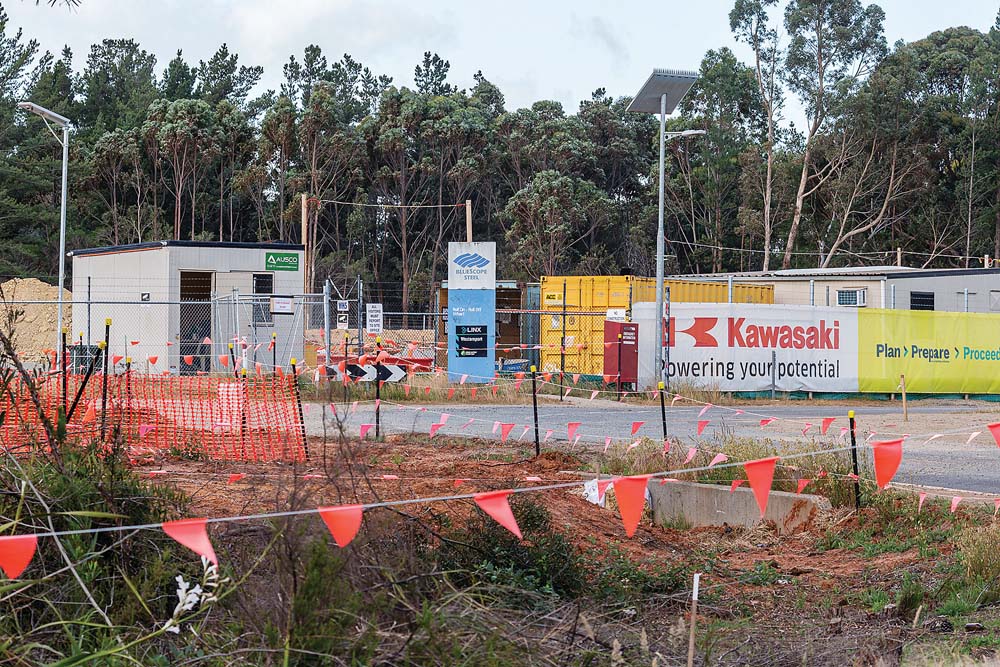Correction (The News 13/5/2020)
THE article “‘Green hydrogen’ nearly affordable” (The News 5/5/20) incorrectly stated that it was South Australia’s Labor government, rather than the Liberal government, that was backing the production of hydrogen from water.
South Australia’s Liberal government is led by Premier Steven Marshall who was involved in a “ground breaking ceremony” at Hydrogen Park south of Adelaide on 1 December 2019.
The Victorian (Labor) and the federal (Liberal National) governments have together given $100 million towards making hydrogen from brown coal in the Latrobe Valley.
A SMALL processing plant nearing completion in Bayview Road, Hastings can be seen as representing a much larger struggle between competing sides in the race to produce hydrogen.
The Hastings plant will turn hydrogen gas into liquid to be exported to Japan for use as a clean fuel in vehicles.
However, the hydrogen comes from processing brown coal in the Latrobe Valley and necessitates the “capture and storage” of CO2, a by-product that will not be exported.
Meanwhile, Queensland and South Australia – also Labor states – are backing the production of hydrogen from water using solar or wind power.
Essentially, “green hydrogen” is produced by using electrolysis to split water into oxygen and hydrogen.
Although power intensive, its proponents say renewable power is getting cheaper all the time and electrolysis will quickly become more cost effective than coal.
Environment Victoria’s campaigns manager Dr Nicholas Aberle said the Latrobe Valley pilot project “problematic as it could be the thin end of the wedge”.
“They’re not testing the carbon capture storage part of the project and [using brown coal] remains a false hope for [jobs in] the Latrobe Valley.”
Dr Aberle had “no doubt” that hydrogen would be part of the energy supply chain in the future, “but this is not green hydrogen, the race is really over before it’s started”.
“Coal to hydrogen remains a short-term and polluting source of energy. The future will no doubt involve growing use of hydrogen as a fuel, but it needs to be clean hydrogen.
“Producing hydrogen from renewable energy will soon be cost-competitive and will always be cleaner and less risky than using coal.
“This pilot project is just another pipe dream of things to do with Latrobe Valley coal. Pretending coal-to-hydrogen has a future serves only to distract from the real economic diversification task facing that community.”
Precautions against COVID-19 are being taken to protect workers involved in the brown-coal-to-hydrogen pilot project at Hastings and in the Latrobe Valley.
“We remain fully committed to navigating through these challenging times with resilience and continue working to our ambitious, mutual hydrogen vision,” the Hydrogen Energy Supply Chain’s project partners stated last month.
While the state and federal governments have each backed the HESC consortium led by Kawasaki Heavy Industries with $50 million, South Australia and Queensland are supporting “green hydrogen” plants rather than relying on a process that involves releasing CO2 from fossil fuels.
Critics say the coal should be left in the ground rather than releasing CO2 in the hydrogen-making process and then trying to store it underground with questionable sequestration methods.
The state government’s commitment is based on the hope that it can lead to further exploitation of the area’s vast brown coal fields as well as providing jobs to a workforce crippled by the collapse of coal-fired power stations.
The federal government is also spending $70 million through the Australian Renewable Energy Agency by inviting and then assessing submissions for “green hydrogen” projects. Labor governments in Queensland, Western Australia and the ACT say no public money should be spent on using fossil fuels to produce hydrogen.
The federal government has committed a further $300m so the Clean Energy Finance Corporation can “invest” in hydrogen energy projects using fossil fuels or “green” alternatives.
The Australian Gas Infrastructure Group (AGIG), Jemena, AusNet Services and Evoenergy wants to see natural gas supplies in the eastern and southern states blended with up to 10 per cent “green hydrogen” by 2030.
The Queensland government is contributing to a hydrogen plant in Gladstone with a view to supplying 10 per cent blended hydrogen to 770 properties by December 2021.
Hydrogen Park South Australia is scheduled to be operational by mid-year, supplying blended gas (5 per cent hydrogen) to 710 households in Mitchell Park.
The South Australian government sees its wind and solar power generating capacity as enabling the state to eventually export “green hydrogen”.


